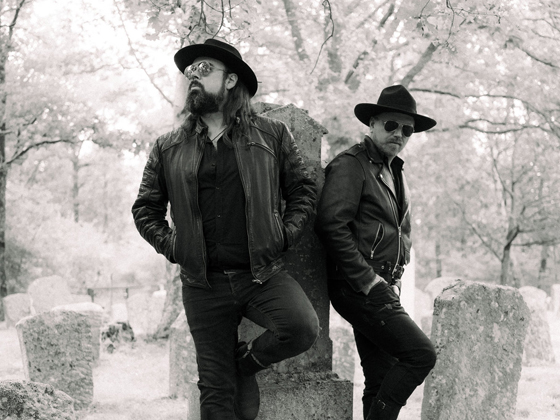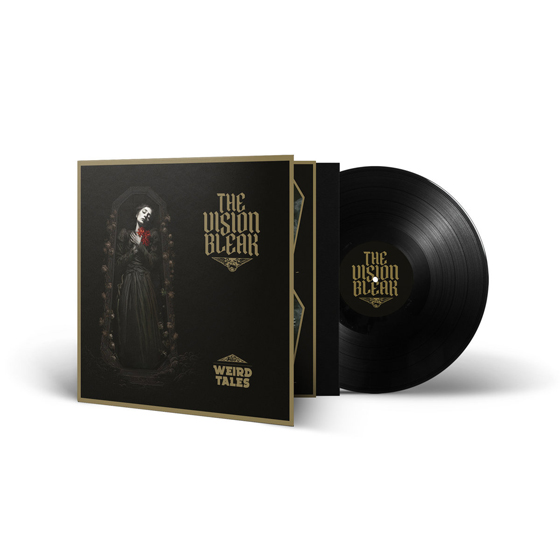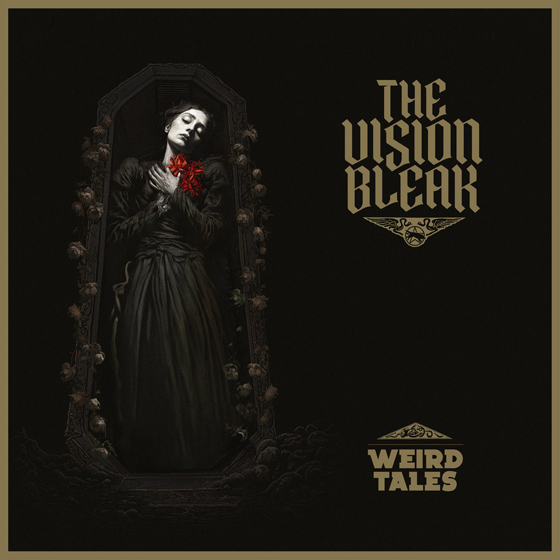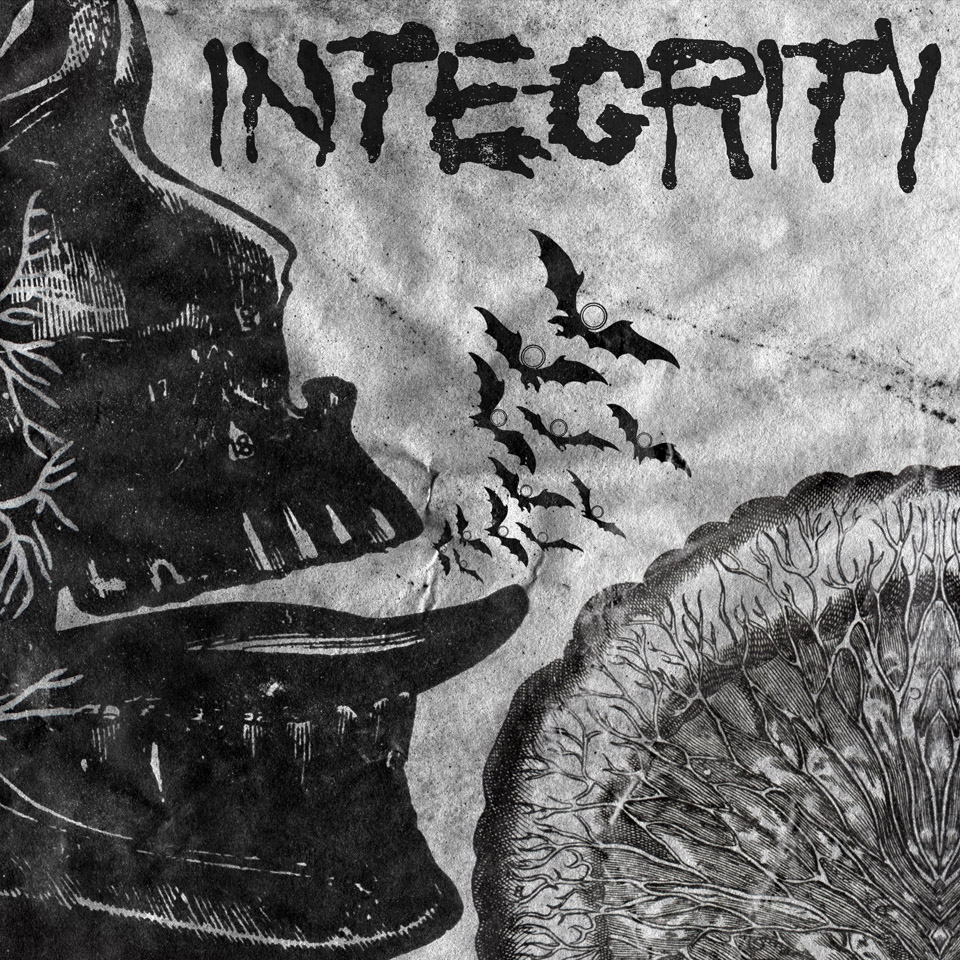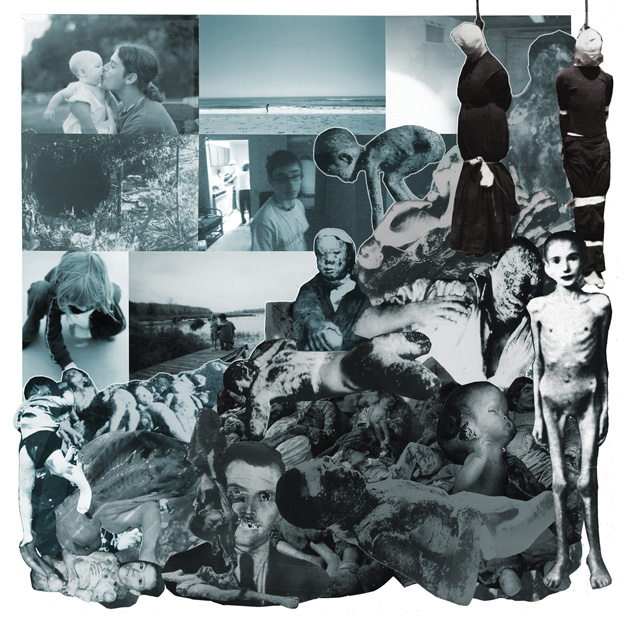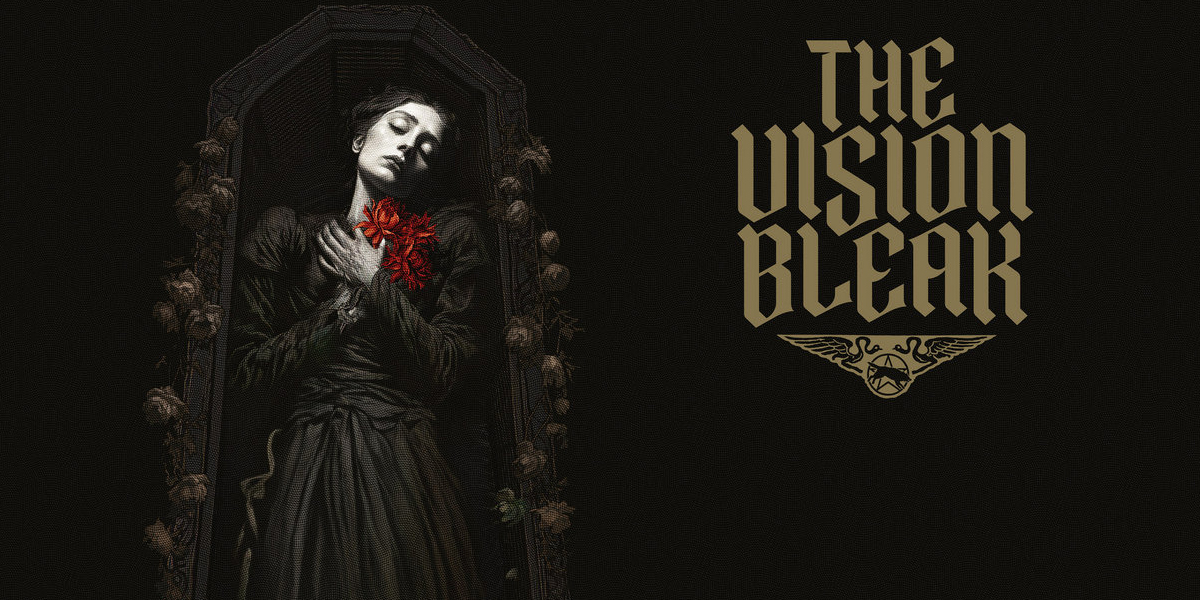
Horror is the primary lyrical inspiration in the heavy metal genre. Sure, metalheads can sing about anger, alienation, fast cars and hot chicks, but the number of heavy bands dealing with the multiple shades of horror is legion. Many are just straight up gore freaks, dealing with flesh-eating zombies, bloodthirsty slashers and other gruesome subjects … they reach for the low hanging fruit. Others have a somewhat more sophisticated approach. H.P. Lovecraft in particular has inspired hundreds of metal bands and will continue to do so until Azathoth decides to shut down the universe.
Very few are the bands that delve deeply into the true mood and mystery of horror, favoring the more subtle and intellectual aspects of the genre. The greatest of these must surely be The Vision Bleak, Germany’s cadaverous duo of Markus “Schwadorf” Stock and Tobias “Konstanz” Schönemann. Active since the early 2000s, these gloomy gentlemen have made a career of probing the horror classics such as Edgar Allen Poe, Nathaniel Hawthorne, Lovecraft, and overlooked authors such as Lafcadio Hearn and Clark Ashton Smith. They prefer the more thoughtful and deeply penetrating horrors.
Weird Tales is their seventh and most ambitious album yet. It is inspired by the spirit of “the unique magazine”, the source of the best tales of mystery and imagination ever published. During its glory years from the 1920s to the 1940s, Weird Tales the magazine featured classic works by Lovecraft, Conan creator Robert E Howard (who could also tell some ghastly horror tales), Clark Ashton Smith (arguably the most talented of them all), Seabury Quinn (creator of the wildly popular Jules De Grandin) and even Ray Bradbury. It’s a marvelous source of inspiration for a The Vision Bleak album.
The band’s style veers towards the Gothic and the symphonic, but generally remains heavy, with smatterings of black and doom metal mixed in. Classical instruments are used to create mood and atmosphere and the vocals range from the deep Gothic croon of Konstanz to the harsh raven croaking of Schwadorf. On the band’s six prior albums, they staked out a very individual sound that is instantly identifiable, but which reaches its peak on Weird Tales.
It must be noted that Weird Tales is meant to be one huge track that is broken up into chapters, each of which deals with a different classic horror tale. It’s easy to detect the individual chapters, but they run together, linked by brief atmospheric segues. It should also be noted that the “chapters” are not strictly taken from authors who appeared in Weird Tales Magazine … songs inspired by Edgar Allen Poe and Lafcadio Hearn, who passed away before the magazine appeared, are included, too. The general theme and atmosphere are more important than being strictly dictated by what ran in the magazine.
Herewith follow my analysis of Weird Tales by The Vision Bleak ….
Chapter 1: Introduction
A very brief mood piece to set the stage, featuring crystalline synth mixed with deeper tones. It bleeds directly into the next chapter.
Chapter 2: In Rue d’Auseil
This track is directly inspired by H.P. Lovecraft’s The Music of Erich Zann. It has a surging, powerful metal feel based on a direct and catchy riff. The Gothic crooning of Konstanz brings to mind Goth heavyweights like Bauhaus and Sisters of Mercy. Those eerie synth tones mix well with the heavier metal to create a dreamy, otherworldly atmosphere. This is a great cut to introduce The Vision Bleak’s mix of Goth and metal.
Chapter 3: In Gardens Red, Satanical
Deep and stark piano tones start this one off, blending into a crushing doom metal riff. This is a real heavy song yet eerie melody is part of every second … it’s almost majestic in a way.
Related Content:
Demons Soundtrack 30th Anniversary Edition Review
NIGHT OF THE LIVING DEAD EP by Morricone Youth Album Review
Chapter 4: Once I Was a Flower
This is The Vision Bleak at their most melodic and accessible. The piano and acoustic beginning to the song is enchanting and even when the harder rocking parts cut in, it never loses its beauty. Never has the Gothic influence of the band been more obvious, especially in the vocals. Schwadorf says that the Lafcadio Hearn short story that inspires this song is the most beautiful thing he ever read. It’s the narration of a flower that accompanies a dying girl to her tomb.
Chapter 5: The Premature Burial
The mellow lead-in here really causes the listener to drop his guard, because it cuts loose with the heaviest and most raging metal track on the album. Schwadorf’s more “croaking” black metal vocals take over here, telling the tormented story of a man buried alive. It’s based on the classic Poe tale. Even amidst the crunchy riffing, keyboards still add layers of atmosphere.
Chapter 6: Mother of Toads
A haunting harp plays a spooky chord, and a whisper asks us to “come hither, come hither”. Then a wall of blasting black metal comes roaring in … yet still that sultry harp can be heard. Layers of keyboards give a huge, majestic sheen to the song. This is based on a grotesque tale from Clark Ashton Smith about a female toad god that seduces men to their death.
Chapter 7: The Graveyard by Nyght in a Thunderstorm
An instrumental interlude that sounds exactly like what its title promises. Heavy guitar, ringing church bells, raging thunder and gloomy organ add to the funereal vibe.
Chapter 8: The Undying One
This is more oppressive doomy metal with a kind of stalking feel to it. Dual harmony vocals add a unique touch. I actually wanted this to last longer.
Chapter 9: Evil Dreams Run Deep
This starts with a prolonged mellow section like a funeral lament, with languorous clean vocals. Then it gets heavy with a horrendous growl and goes into a mid-paced heavy crunch. There’s a lot of veering between heavy and low-key sections. Probably my least favorite tune here, it still has The Vision Bleak’s trademarks to spare.
Chapter 10: The Witch with Eyes of Amber
This starts with deep synth tones like something from an Italian giallo before kicking in with a muscular metal riff. Konstanz’s crooning has an almost sing-song quality to it as it tells the story of a beguiling witch.
Chapter 11: Canticle
This chapter totally kicks ass with some of the fiercest, heaviest riffing on the album. Yet it retains all the ethereal qualities of The Vision Bleak, including great use of bells and a fantastic catchy chorus. This is the band at their absolute best.
Chapter 12: To Drink from Lethe
Gentle acoustic guitar starts this final chapter. When the metal starts, it’s somber death-doom in the vein of My Dying Bride, with slow riffs and weeping, syrupy keyboards that drip with sadness. It provides a solemn ending to an epic album exploring the misty byways of classic horror.


